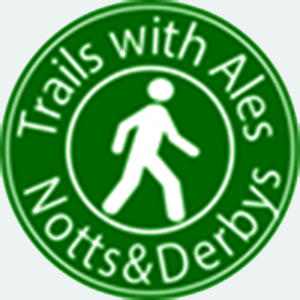
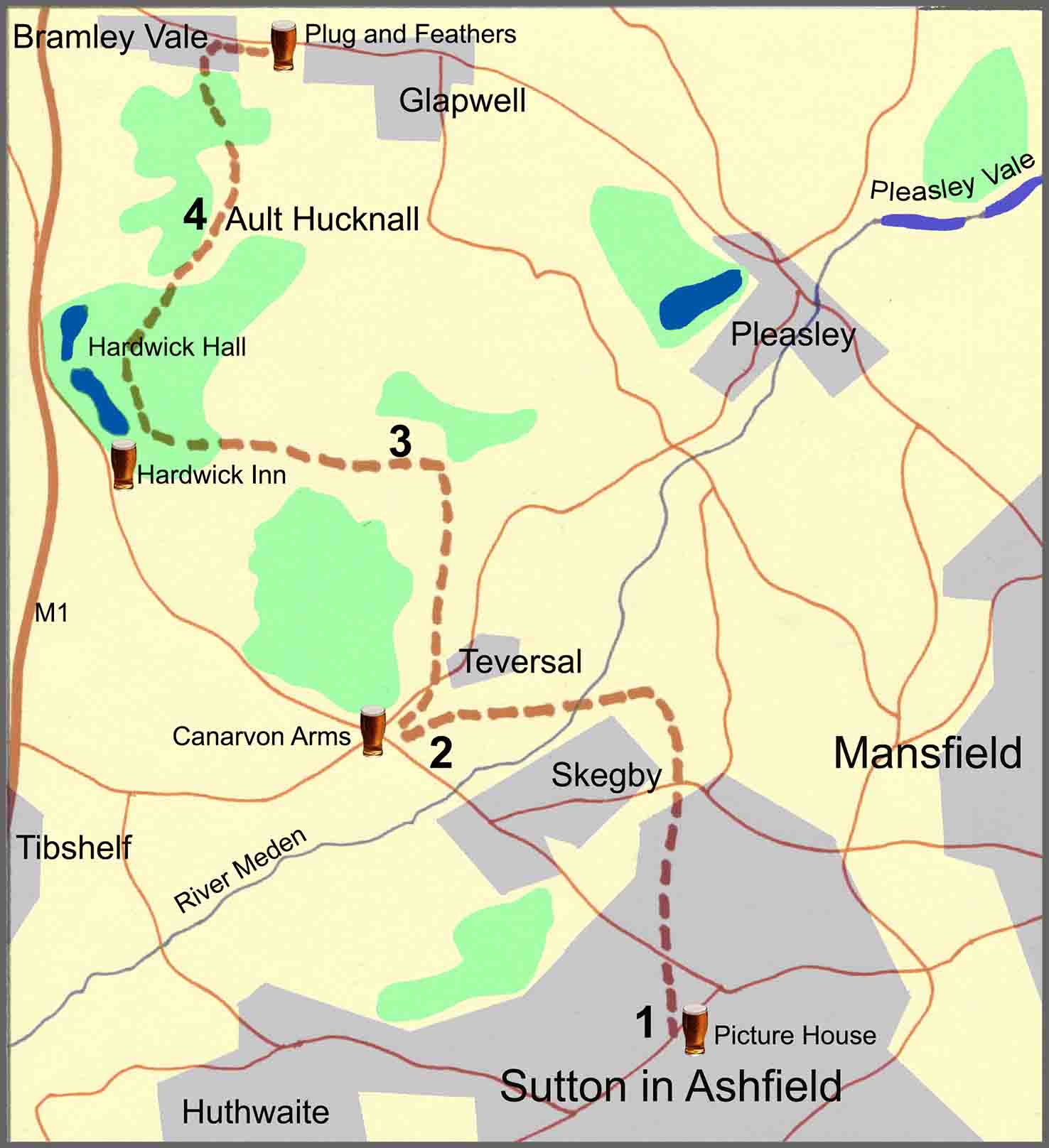
About this walk
The walk described below starts from Sutton in Ashfield, going first to the village of Teversal, following the routes of former railway lines, and then to Hardwick Hall, before finishing in Bramley Vale and Glapwell. However, the start and finish points are interchangeable, with excellent bus services to Sutton in Ashfield and to Glapwell from various locations in the area including Derby, Nottingham, and Chesterfield.
The overall route is just under nine miles, covering off-road multiuser trails, undulating footpaths and some short distances by road. There are four pubs featured en route, fairly evenly spaced and serving good cask ales; so, at just under nine miles, it’s a comfortable four-pint walk, allowing you to arrive home calorie neutral and none the worse for wear. The pubs are: the Picture House at Sutton in Ashfield; the Canarvon at Teversal, the Hardwick Inn at Hardwick, and the Plug and Feathers just outside Bramley Vale. Other good pubs are available at Sutton in Ashfield.
As well as the good ales, there are also along the way a number of points of historical interest. These include: the sites of several collieries now restored as country parks; Silverhill Woods, on the former spoil heap of Silverhill Colliery, and the bronze statue commemorating Nottinghamshire miners; Teversal Manor believed to have inspired D.H.Lawrence’s novel Lady Chatterley’s Lover; and Hardwick Hall and the Hardwick Park.
Route Description
1. From the Picture House in Sutton in Ashfield town centre, walk just under two hundred yards to Priestsic Road, the B6023. Four hundred yards up Priestsic Road, turn left into Northern View and walk two hundred yards to the end of the road where the Skegby Trail begins at the Stanton Hill sign. Approximately four hundred yards along the Skegby Trail, cross Stoneyford Road, the B6028, and continue for a further three quarters of a mile on the trail to reach Mansfield Road. Cross over Mansfield Road and, turning into Buttery Lane, walk a hundred yards up the lane after which you bear right to continue on the Skegby Trail. A quarter of a mile further along the Skegby Trail, turn left onto the Link Trail that branches off from the Skegby Trail. The Link Trail connects the Skegby Trail with the Teversal and Silverhill Trails, near the village of Teversal which is a mile and a quarter further on. At the end of the Link Trail, bear left up a small incline onto the Silverhill Trail.
The Skegby, Siverhill and Teversal Trails, that form sections of this walk, are part of the Phoenix Greenways maintained by Derbyshire and Nottinghamshire County Councils. The Phoenix Greenways are a network of over twenty miles of off-road routes and country parks many of which were old collieries and railways and so, as Derbyshire County Council says, ‘like the Phoenix rising from the ashes, nature is once again flourishing with our care.’ The Headstocks and associated machinery and memorabilia of one of these pits, at Pleasley, has been preserved as a heritage centre. Silverhill Woods, near Teversal, was formed from the reclaimed spoil heap of Silverhill colliery and from this high point there are views including landmarks such as Lincoln Cathedral, Bolsover Castle and Hardwick Hall. A bronze statue, called Testing for Gas depicting a kneeling coal miner with a Davy Safety Lamp, stands at the summit as a tribute to the Miners of the eighty five former Nottinghamshire collieries.
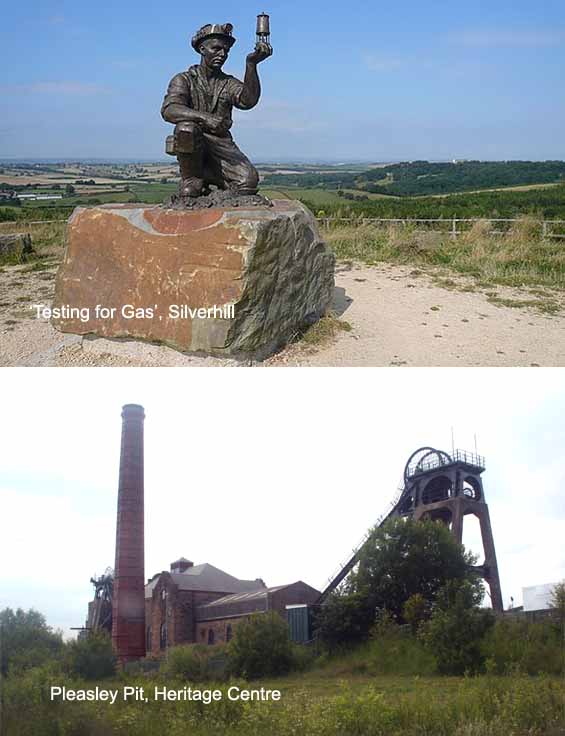
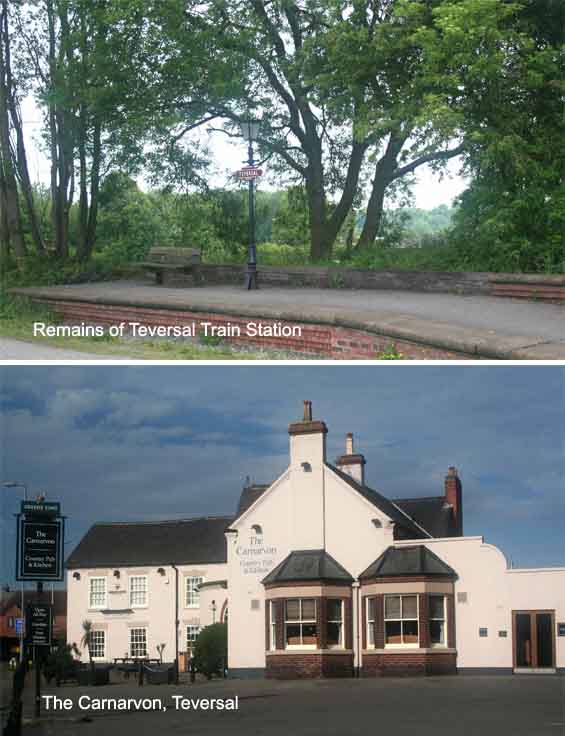
2. Four hundred yards along the Silverhill Trail, past the remains of Teversal train station, there is a bridge that takes the Silverhill Trail over Fackley Road. Just before the bridge, bear right to take the path that leads down to Fackley Road. Turn right onto the road and walk two hundred yards to the Carnarvon pub. From the Canarvon, turn right, and right again, and walk six hundred yards along Pleasley Road, in the direction of Teversal village, until you come to a railway bridge with the Teversal Trail above you. Immediately after the bridge, turn right and climb the steps at the top of which you will bear right onto the Teversal Trail. After four hundred yards, you come to another railway bridge where you leave the trail and climb up onto Peartree Lane, turning left along the lane to walk across the bridge with the Teversal trail beneath you. Walk half a mile along Peartree Road, passing several houses on your right, until the lane bends sharp right where you will turn left, off the lane, to follow the footpath that runs along the hedgerow. A hundred yards further on, turn right to take the footpath across the field to Newbound Lane.
Teversal Manor, in Teversal Old Village, is believed to be ‘Wragby Hall’, home of the Chatterley family and the setting for D.H.Lawrence’s infamous novel Lady Chatterley’s Lover. It is said that D.H.Lawrence wrote some of the manuscript for Lady Chatterley’s Lover in the Ship Room of the Canarvon public house. The Canarvon, is named after the Carnarvons who were Lords of the Manor at Teversal for 99 years, until the death of Lady Elizabeth Carnarvon in 1929. The 5th Earl of Carnarvon is best known as the financial backer of the search for, and the excavation of, Tutankhamun’s tomb in the Valley of the Kings in Egypt. Canarvon’s death in 1923, not long after the excavation of Tutankhamun’s tomb, helped fuel the legend of the ‘Curse of Tutankhamun’.
3. Walk along Newbound Lane for just under half a mile and, immediately in front of the driveway to Dovedale Farm, enter a gate on the right to descend steps into Lady Spencer’s Wood where, over two hundred years ago, the ladies from Hardwick Hall would have exercised. Towards the end of Lady Spencer’s Wood, with the main car park for Hardwick Hall on your right, turn left downhill to leave the wood and cross a field. At the end of the field turn left onto the drive that leads to the Hardwick Inn some four hundred yards further on downhill. From the Hardwick Inn, walk a few yards up the drive you came down and, at the gate, bear left to walk around the woodland within Hardwick Park. Just before the park’s Great Pond, bear off to the right, past the Ice House and Row Ponds, up to the Bridleway that leads for a mile up Broadoak Hill to the Hogmire Lane at Ault Hucknall.
Built for Bess of Hardwick, between 1590 and 1597. Hardwick Hall is one of the earliest examples of the English interpretation of the renaissance style of architecture which came into fashion from Florence. Its arrival in Britain coincided with the period when it was no longer necessary or legal to fortify a domestic dwelling. Bess of Hardwick was the richest woman in England after Queen Elizabeth 1st and her house was conceived to be a conspicuous statement of her wealth and power. The windows are exceptionally large and numerous at a time when glass was a luxury, leading to the saying, ‘Hardwick Hall, more glass than wall’. The Hall’s chimneys are built into the internal walls of the structure, in order to give more scope for huge windows without weakening the exterior walls. Ownership of the house was transferred to the National Trust in 1959. Today, it is fully open to the public.
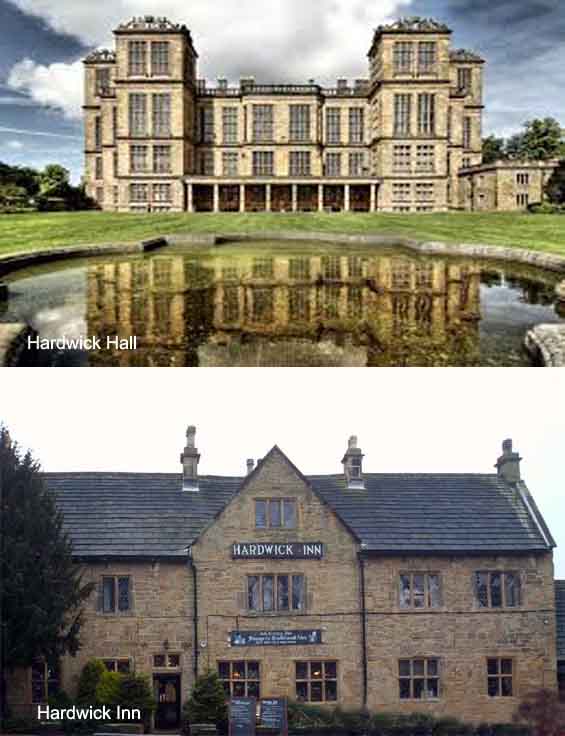
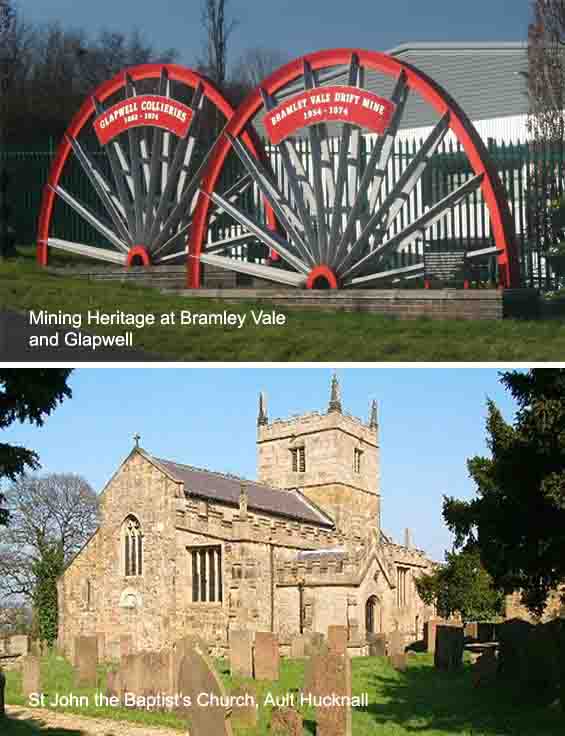
4. As you approach Ault Hucknall you will see the St John the Baptist Church off to your right. At Hogmire lane, bear left and walk along the lane for a hundred yards where you will turn sharp right, off the lane, to join a track. Follow the track for three hundred yards and then bear slightly left, off the track, to join a footpath that leads into Hucknall Wood. Follow the path through the wood for three hundred yards until you come to a track that crosses the footpath, left to right. Cross over the track and continue straight ahead on the footpath for a further two hundred yards and bear slightly left to take the footpath that runs along the left-hand edge of Hollingworth Wood. Another two hundred yards further on, you will reach Bramley Vale with Bramley Vale Primary School on your right. From the school, walk a hundred yards along an alleyway that leads to York Crescent. Continue straight on, down York Crescent, to cross Bramley Road and take the alleyway that leads to the A617 through Bramley Vale and the main Chesterfield to Mansfield bus route. Four hundred yards uphill along the A617 is the Plug and Feathers pub.
Ault Hucknall is described by local residents as the ‘smallest village in England’, as it consists of only a church and three houses. The philosopher Thomas Hobbes was buried within Ault Hucknall’s St John the Baptist Church following his death in 1679. Hobbes is considered to be one of the founders of modern political philosophy and the often quoted ‘life is nasty, brutish and short’ is attributed to him. His burial at Alt Hucknall is linked to his association with the Cavendish family, in particular with William Cavendish, Baron of Hardwick (and later Earl of Devonshire), whose son William he tutored. Bramley Vale and Glapwell are two former colliery villages. Bramley Vale drift mine operated from 1954 until 1974 and Glapwell colliery from 1882 until 1974.
